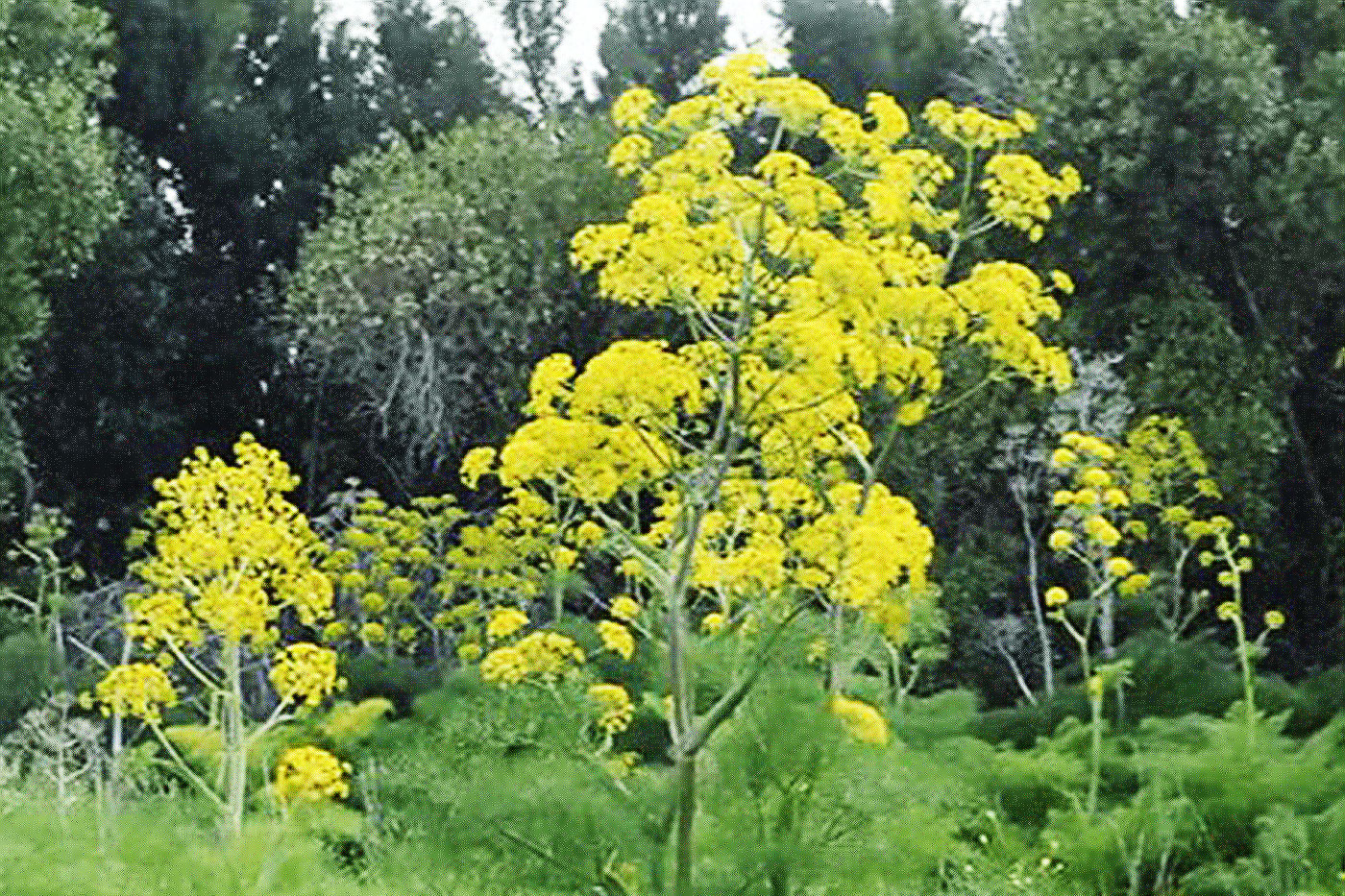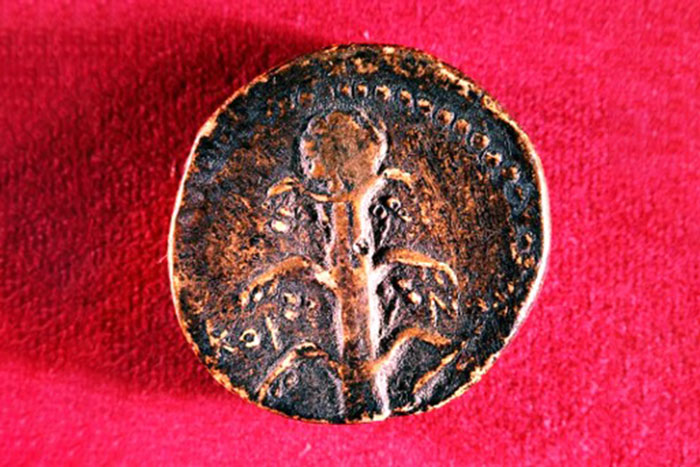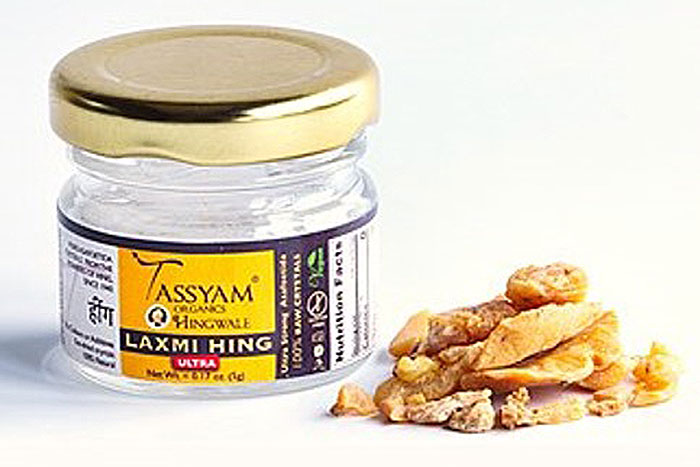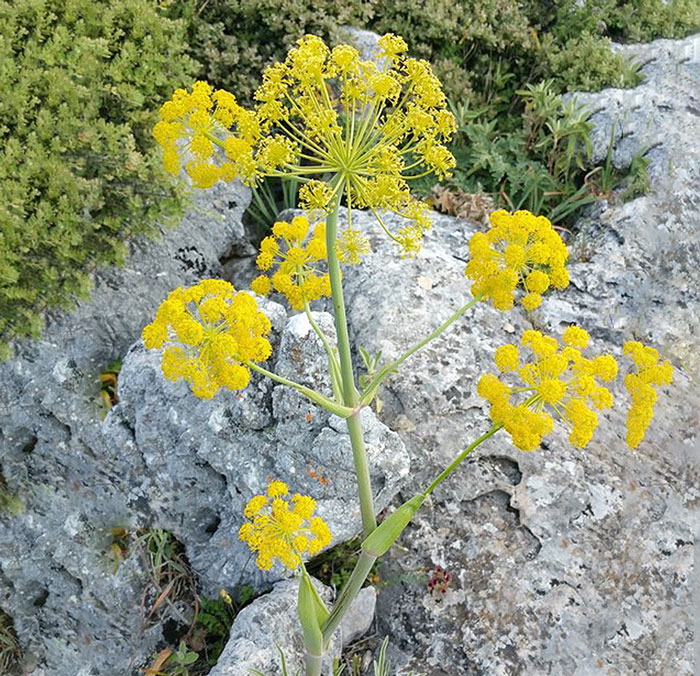
Silphium was thought to resemble Ferula communis, or giant fennel, pictured here. (Credit: Wikimedia Commons)
When a species becomes extinct, we normally assume that it is an animal of some sort. A classic example is the dodo, an extinct flightless bird that was native to an island just east of Madagascar in the Indian Ocean. Nearly everyone is aware there once was a bird called dodo that is no more. Indeed, "dead as a dodo," is an expression that has come to mean unquestionably dead or extinct. Other, more ancient, examples of extinct animals can be verified from fossilized remains. The dinosaurs are a good example of the latter.
Plants also become extinct. However, their absence from our planet is much less obvious. Additionally, plant fossils are rare when compared with those of animals. Silphium is an example of a plant that once was highly valued and of great economic importance. It was sold by ancient merchants, much the way we sell spices today. History records that, because of its great demand and limited supply, some considered it to be more highly prized than gold. Today, silphium is nowhere to be found and, for that reason, considered to be extinct.
First, it is important to establish that the silphium referred to in this article is not the genus Silphium found in the Asteraceae plant family. Members of that genus (e.g., Silphium terebinthinaceum, or prairie dock) are still quite common and found in fields and along roadsides all over the Midwest. Compass plant (Silphium laciniatum) is another very common member of the genus.
Instead, the silphium referenced by this article was an ancient, somewhat mysterious plant that was said to be used for a variety of things including as a seasoning, perfume, aphrodisiac, and medicine. The exact identity of silphium is unclear. Silphium had disappeared by the time Linnaeus (1707–1778) developed the binomial system of nomenclature. It was, however, later given the name Silphion Gr. and thought to be a member of the Apiaceae (a.k.a. Umbelliferae) plant family.
The history of silphium dates back to the ancient Egyptians and Minoans who chronicled the plant by developing a specific glyph (carved symbol) to represent it. Theophrastis, a Greek botanist and student of Aristotle, described silphium in his writings as "having thick roots covered in black bark, about 48 centimeters long with a hollow stalk, similar to fennel and golden leaves like celery." Later, the Romans mentioned the plant in their poems and songs and considered it to be worth its weight in silver coins. Julius Caesar (100–44 BC) reportedly kept 1,500 pounds of the plant's resin in the Roman treasury.

Image of silphium on an ancient coin. (Credit: almay.com)
Silphium was thought to have been native to a rather narrow strip of land about 25 miles wide and 100 miles long in the southern steppe region of ancient Cyrenaica (eastern Libya today). Cyrene was the oldest and most important city of Cyrenaica. The exportation of silphium was so important to Cyrene's economy that a majority of their coins bore an image of the plant. The rudimentary portrayal is of a thick-stemmed plant with celery-like leaves and an umbel as an inflorescence.
According to an article by Zaria Gorvett in the BBC.com weekly newsletter, silphium might have been a close relative of Ferula foetida which is the source of asafoetida. The latter is the dried sap extracted from the rhizome or tap root of several species of Ferula, including F. foetida. History records that when the supply of silphium started to decline, the Greeks and Romans began to substitute asafoetida for it in their food preparation. Others have speculated silphium was a close relative to giant fennel (Ferula communis), a large, coarse plant with a pungent aroma, that grows wild in the Mediterranean region today.

Asafoetida, a very pungent spice, was used by Greeks and Romans as a substitute for silphium when it became scarce. (Credit: Ayush3090)
Whatever its true identity, one of the reasons silphium became scarce during the ancient Greek and Roman era was the multitude of things for which it was used. Its thick stalks were cooked and consumed as a vegetable. Its roots were dipped in vinegar and eaten raw. Silphium also was used as a preservative for pulse crops such as lentils. Reports also suggest that sheep and goats fed the plant were said to have more succulent and tender meat. Hence, animals were allowed to graze it, much the way cattle eat grass today.
Additionally, perfume was extracted from its delicate blooms, while its dried sap (laser) was grated and used as a spice in a variety of exquisite Greco-Roman recipes. Laser was a very pungent spice that was highly valued and in great demand. The Roman gourmet Apicius described a unique way to stretch one's supply of the expensive spice by putting pine kernels (pignolia nuts) along with the spice in an air-tight glass jar. When silphium was called for in a recipe, he suggested taking several of the pine kernels out of the jar, crushing them and adding them to the dish. According to Apicius "they will impart to your dish an admirable flavor."
Medicinally, silphium was prescribed for a wide array of problems including goiter, sciatica, tooth ache, intestinal disorders, hormonal disorders, epilepsy, tetanus, polyps, and malignant tumors. Finally, there is much evidence to suggest that the Greeks and Romans used juice derived from silphium both as an aphrodisiac and an abortifacient. Its effectiveness for the latter two uses is, at best, questionable.
In addition to the demand for silphium exceeding its supply, the plant became scarce because of the difficulty of growing it commercially. The aforementioned Greek botanist and philosopher Theophrastus (c. 371–287 BC) is considered by many to have been the premier plant expert of his day. With all of his knowledge and experience, even Theophrastus was at a loss to explain why the plant could not be cultivated successfully. Today, experts speculate that silphium might have been a sterile hybrid between two other species of plants and could only be propagated vegetatively.
Roman author and naturalist Pliny the Elder (23/24–79 AD) wrote that within his lifetime, only a single stalk of the plant could be found. It was harvested and given to the emperor Nero as a novelty around 54–68 AD. Sadly, silphium is nowhere to be found today. The question of why the plant disappeared remains a mystery shrouded in speculation.
Most authorities agree that silphium was overharvested, overgrazed and might have been the victim of its own genetic traits that allowed it to thrive in only a small sliver of land in the Mediterranean region of North Africa. The Greeks tried to prolong its supply by regulating the amount of the plant's root that could be harvested at one time. This suggests that if enough of the root system was allowed to remain in the ground, the plant would recover. Inevitably, greed overcame good environmental stewardship. As the value of silphium increased and its supply decreased, greedy merchants may have harvested it to extinction.
However, the fact that silphium has never been identified clearly leads to speculation that the plant might be "hiding in plain sight" somewhere today. For example, Ferula tingitana, often referred to as Tangier fennel is one species that has been suggested to be silphium. Additionally, a recent study published in 2021 identified Ferula drudeana, a species native to the Mediterranean region, as a promising candidate for silphium's identity. This relatively new species matches the features of silphium depicted on coins, as well as ancient descriptions of the plant. However, without a sample of the original silphium, DNA verification is not possible.

Ferula tingitana or Tangier fennel is considered by some to be the plant referred to by ancients as silphium. (Credit: Wikimedia Commons)
Whatever silphium's fate, its presence on our planet was largely in vain unless we learn from its demise. Yet today, many people around the world rely on plants for their medicine. For example, it is estimated that 80 percent of all Africans use herbal compounds obtained from wild plants to treat their ailments. Unfortunately, experts estimate that one-third of these species are in danger of extinction due to overharvesting and the encroachment of civilization on their native habitat.
The Center for Plant Conservation (https://saveplants.org/) is a network of over 70 institutions that brings together scientific knowledge and applied conservation experience to advance work that saves plants. This organization for plant conservation has four decades of experience in designing research which builds the foundation of knowledge for good plant conservation practices. In seed banks, nurseries, garden displays, tissue culture labs, and cryopreservation tanks, it maintains a collection of more than 2,000 of the most endangered plants native to the United States and Canada. Paraphrasing from their website, "We save plants because without plants there would be no us. Plants and their incredible diversity make life as we know it possible."